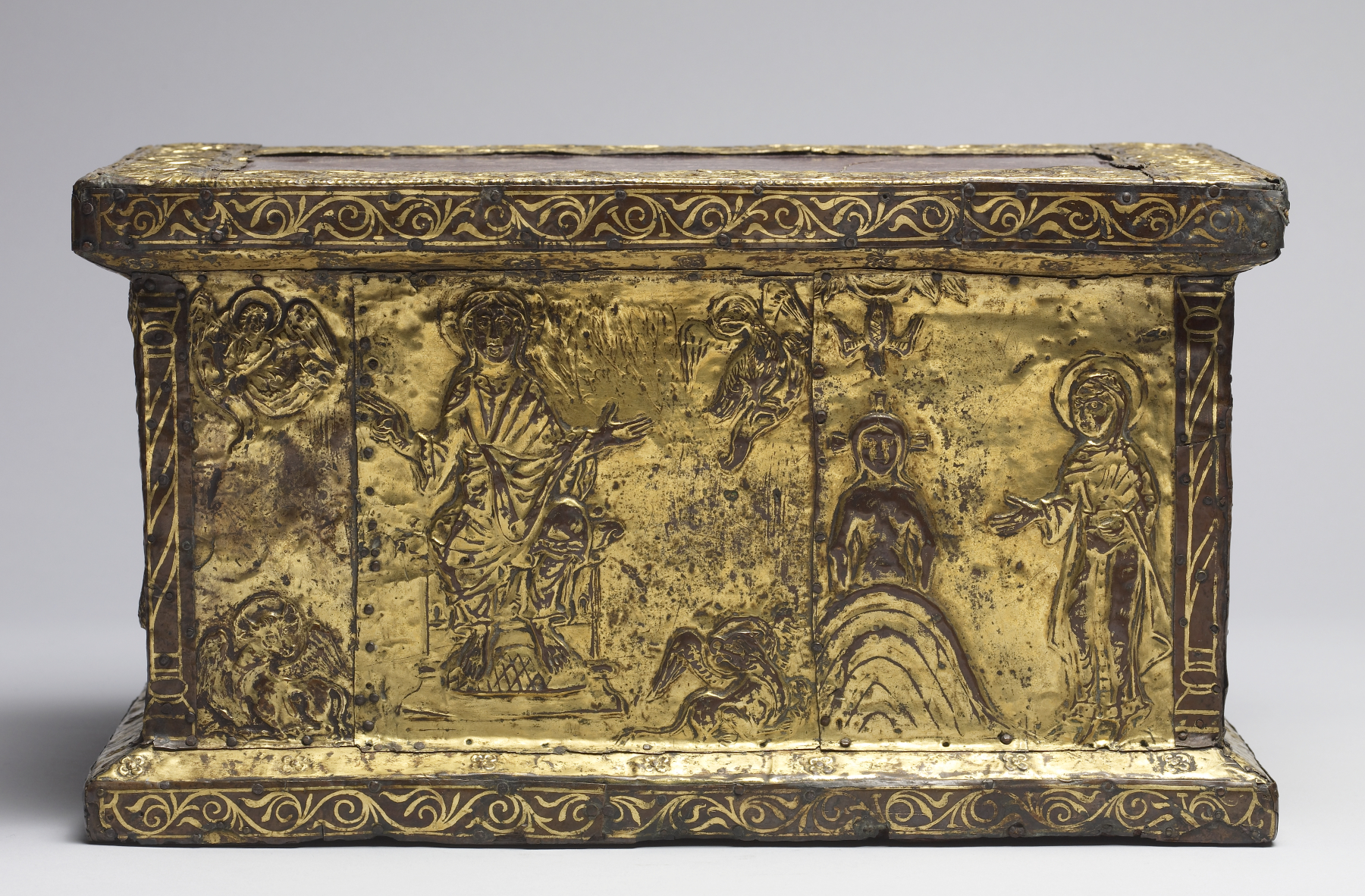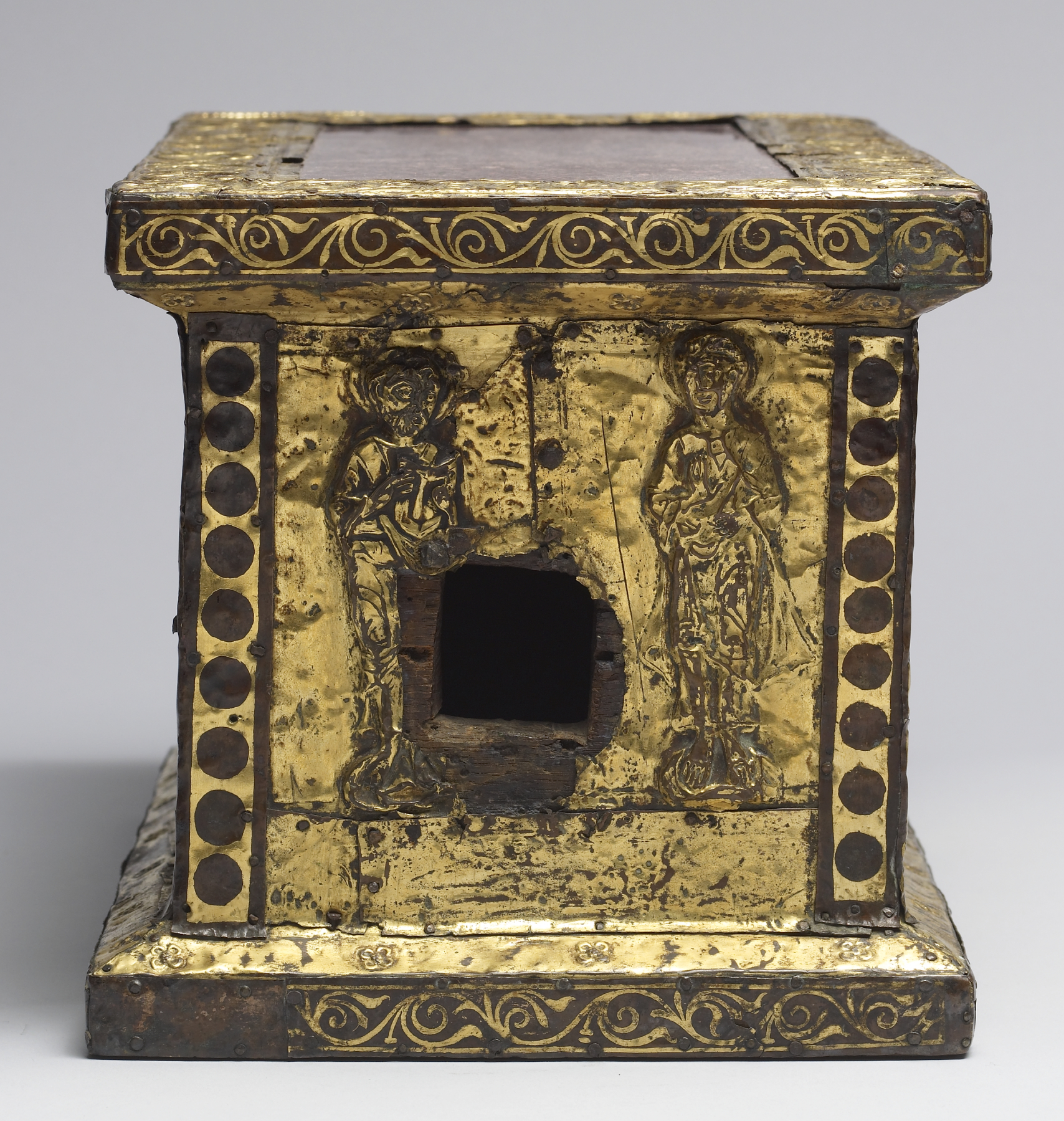Portable Altar with Scenes of the Life of Christ
(Medieval Europe )
Portable altars were used by Christians to celebrate the Mass while traveling. On one long side is depicted the Baptism of Christ, attended by a veiled woman, possibly representing the Church, and Christ in Majesty, surrounded by Evangelist symbols. On the other long side, John the Baptist and the Holy Women at the Tomb are shown. Originally, the figure of John the Baptist was part of the Baptism scene, but he was mistakenly placed with the Holy Women when the 11th-century plaques (perhaps from an altar panel) were reused in the 12th century to make this portable altar. A pair of apostles decorate both short sides. The rough, square opening at one end was made later, to remove the relic once sealed inside.
Provenance
Provenance (from the French provenir, 'to come from/forth') is the chronology of the ownership, custody, or location of a historical object. Learn more about provenance at the Walters.
Guldenpfennig, Paderborn; A. Seligmann, Rey & Co., New York; Henry Walters, Baltimore,1927, by purchase; Walters Art Museum, 1931, by bequest.
Exhibitions
| 2016 | Waste Not: The Art of Medieval Recycling. |
Conservation
| Date | Description | Narrative |
|---|---|---|
| 1/18/1966 | Treatment | stabilized |
Geographies
Germany, Reichenau
(Place of Origin)
Germany, Paderborn (Place of Origin)
Measurements
Overall: H: 7 1/2 × W: 13 3/8 × D: 7 5/8 in. (19 × 34 × 19.3 cm)
Credit Line
Acquired by Henry Walters, 1927
Location in Museum
Centre Street: Third Floor: Migration and Early Medieval Art
Accession Number
In libraries, galleries, museums, and archives, an accession number is a unique identifier assigned to each object in the collection.
In libraries, galleries, museums, and archives, an accession number is a unique identifier assigned to each object in the collection.
53.77










